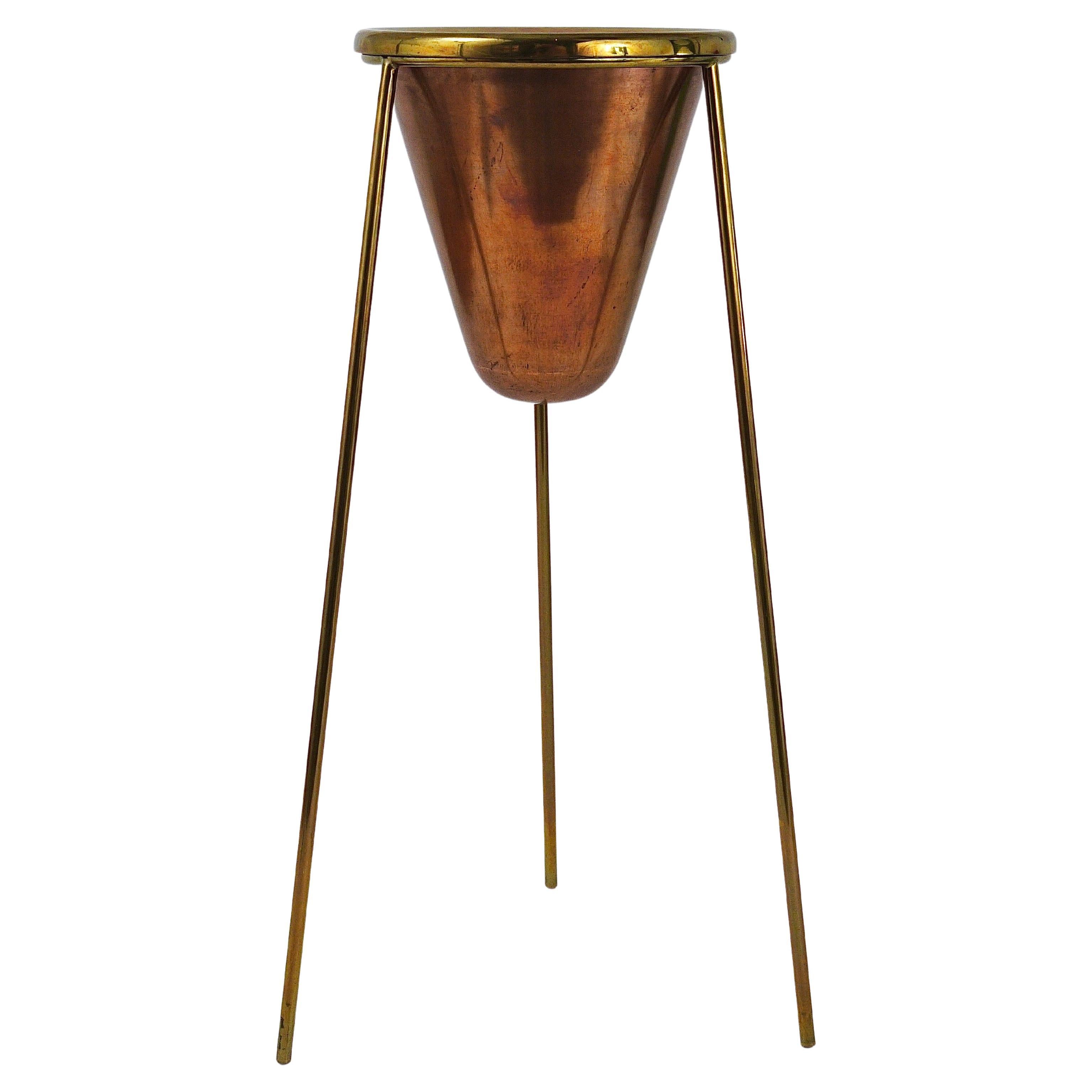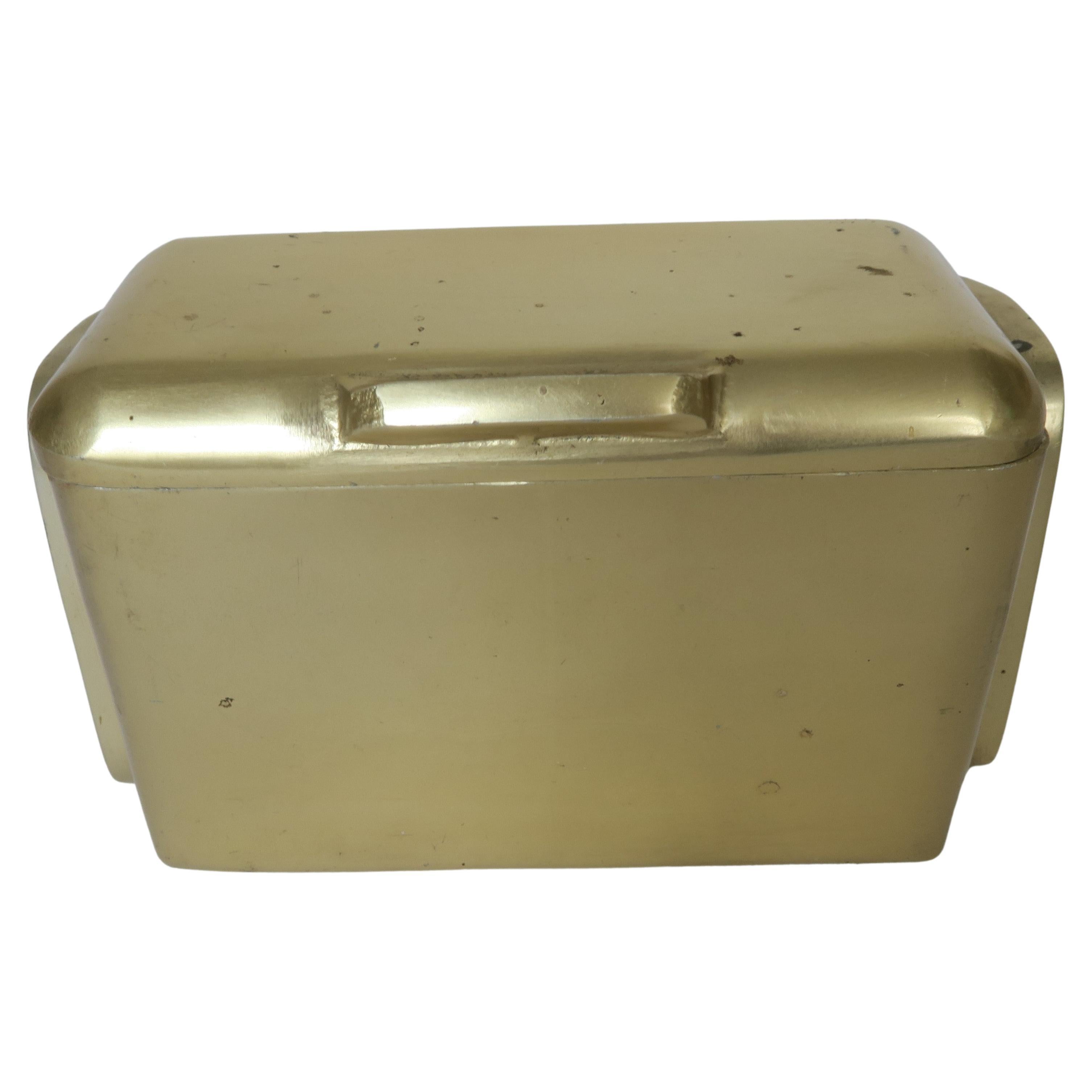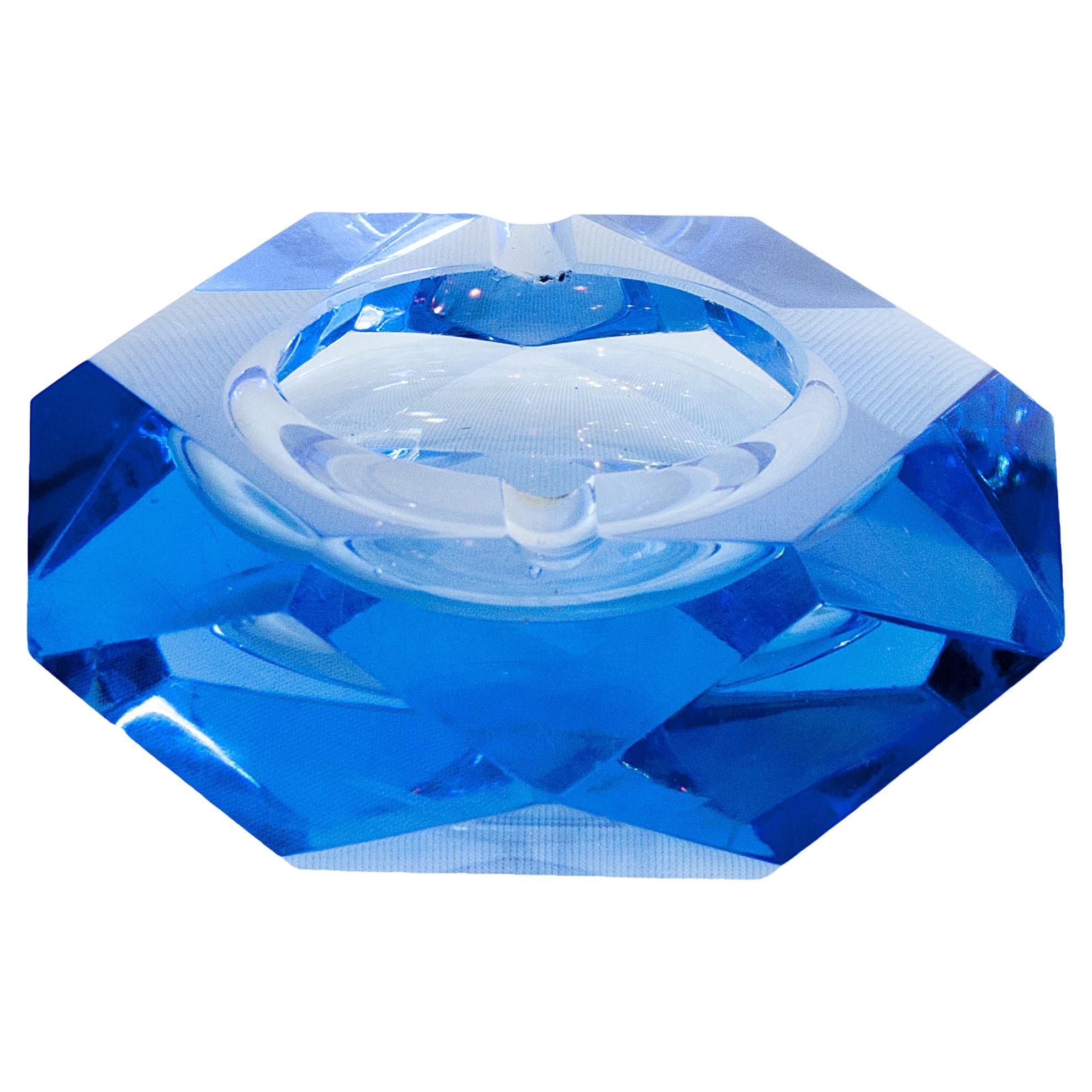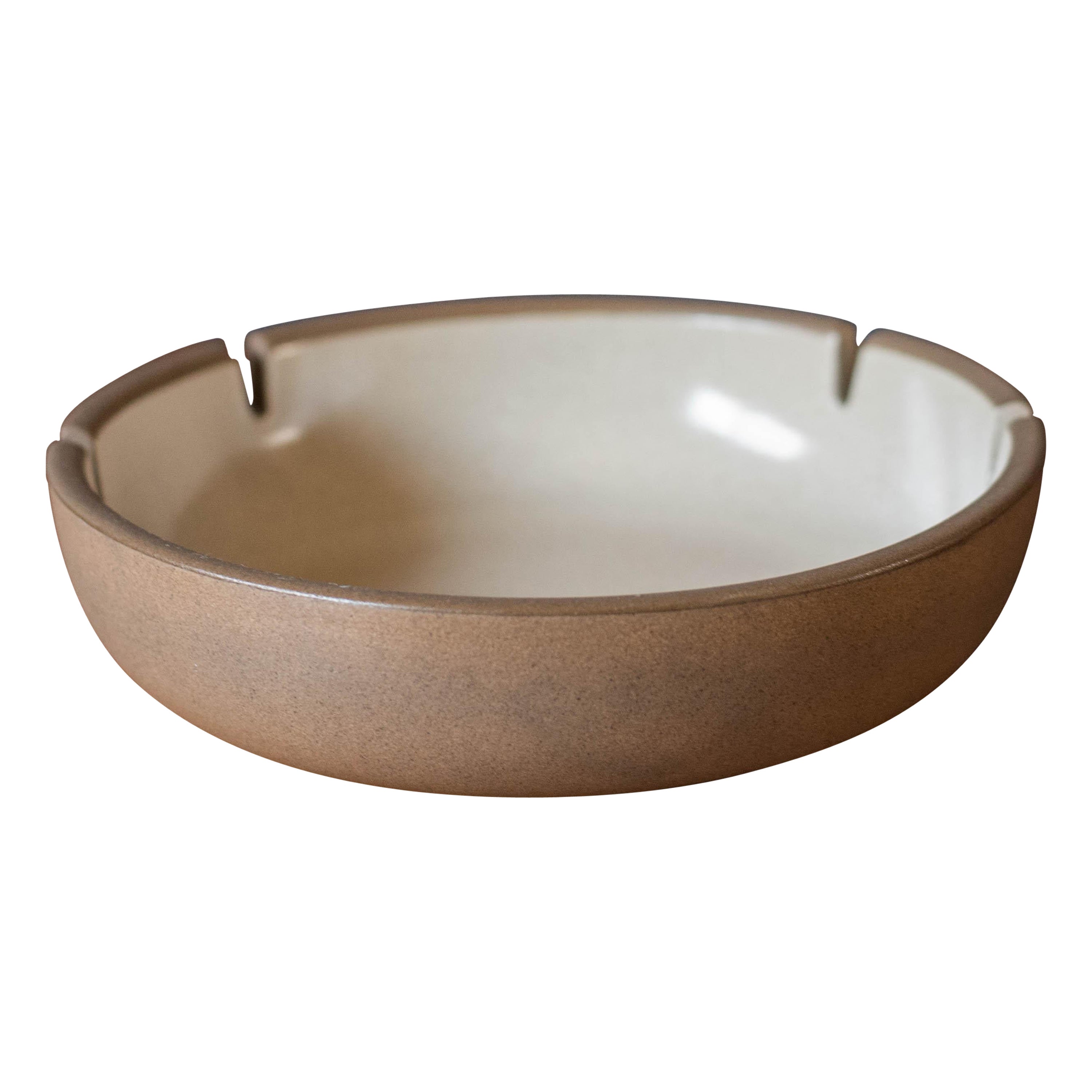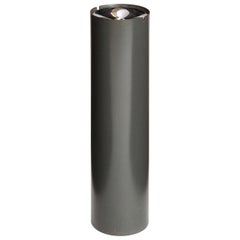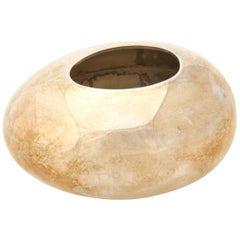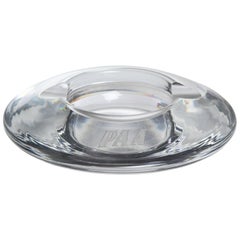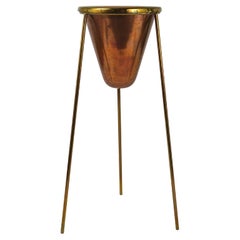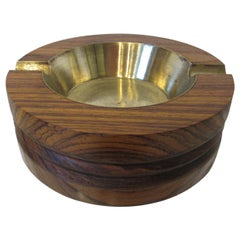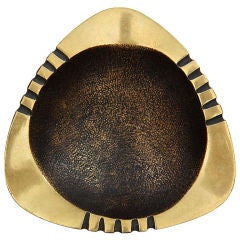
Austrian Ashtray by Rena Rosenthal
View Similar Items
Want more images or videos?
Request additional images or videos from the seller
1 of 5
Austrian Ashtray by Rena Rosenthal
About the Item
- Dimensions:Height: 1 in (2.54 cm)Diameter: 3.5 in (8.89 cm)
- Style:Mid-Century Modern (Of the Period)
- Materials and Techniques:
- Place of Origin:
- Period:
- Date of Manufacture:1950s
- Condition:
- Seller Location:Sagaponack, NY
- Reference Number:Seller: 1213.0011stDibs: U1110258903639
About the Seller
4.9
Recognized Seller
These prestigious sellers are industry leaders and represent the highest echelon for item quality and design.
Gold Seller
These expertly vetted sellers are highly rated and consistently exceed customer expectations.
Established in 1995
1stDibs seller since 2010
433 sales on 1stDibs
Typical response time: 4 hours
Associations
20th Century Specialists
More From This SellerView All
- Standing Floor Ashtray by KnollBy KnollLocated in Sagaponack, NYA tall, Minimalist standing floor ashtray having a weighted cylindrical black lacquered steel body with a chromed removable top.Category
Vintage 1960s American Mid-Century Modern Ashtrays
MaterialsSteel
- Silver Plated Egg Bowl / AshtrayBy Carl M. CohrLocated in Sagaponack, NYA silver plated bowl or ashtray with an unfinished interior. Designed by Carl Cohr and produced in Denmark in the 1960s.Category
Vintage 1960s Danish Scandinavian Modern Ashtrays
MaterialsMetal, Silver Plate
- Engraved Ashtray by OrreforsBy OrreforsLocated in Sagaponack, NYA substantial and sculptural engraved glass disc-form ashtray.Category
Vintage 1950s Swedish Scandinavian Modern Tobacco Accessories
MaterialsGlass
- Floor Ash Stand by StilnovoBy StilnovoLocated in Sagaponack, NYA graphic and expressive weighted floor ash stand having the form of a bold red column, the aluminium and lacquered top holding a removable insert.Category
Vintage 1960s Italian Mid-Century Modern Ashtrays
MaterialsAluminum, Steel
- 1940s Italian Hand Carved Pipe by SavinelliBy Savinelli designLocated in Sagaponack, NYA hand carved wood smoking pipe, the handle circled by a silver band with etched decoration. Marked "Estella 316 EX".Category
Vintage 1940s Italian Mid-Century Modern Ashtrays
MaterialsMetal
- Beautiful Stand by Oscar BachBy Oscar Bruno BachLocated in Sagaponack, NYA beautiful stand made of wrought iron and silvered bronze having two bowls branching out from a decorated stem that rises from a stepped dish base. Signed by sculptor Oscar Bach.Category
Early 20th Century American Art Nouveau Ashtrays
MaterialsBronze, Wrought Iron
You May Also Like
- Rare Carl Aubock Copper & Brass Tripod Floor Ashtray, Austria, 1950sBy Werkstätte Carl AuböckLocated in Vienna, ATA rare modernist vintage floor standing ashtray from the 1950s, designed and executed by Carl Auböck, Vienna. The bowl of this beautiful...Category
20th Century Austrian Mid-Century Modern Ashtrays
MaterialsCopper, Brass
- Midcentury Rosewood and Brass Large Ashtray by CEBy Midcentury Italian schoolLocated in Cincinnati, OHA rich large dark midcentury rosewood ashtray with brass bowl having two slots, this heavy solid piece has the designers branded mark to the bottom " CE " ...Category
Mid-20th Century Unknown Mid-Century Modern Ashtrays
MaterialsRosewood
- Original 1956 ÖBB ' Österreichische Bundesbahnen' Ashtray by Josef HoffmannLocated in Vienna, ATIn this ad you can find a beautiful historical artifact. The object for sale is an aluminum cast board ashtray used on Austrian trains in the 50s. It as manufactured for the staatlic...Category
Mid-20th Century Austrian Mid-Century Modern Historical Memorabilia
MaterialsAluminum
- Ashtray 1950 CrystalLocated in Ciudad Autónoma Buenos Aires, CCrystal We have specialized in the sale of Art Deco and Art Nouveau and Vintage styles since 1982. If you have any questions we are at your disposal. Pushing the button that reads ...Category
Vintage 1950s Italian Space Age Ashtrays
MaterialsCrystal
$2,450 - Ashtray Crystal, 1950Located in Ciudad Autónoma Buenos Aires, CCrystal We have specialized in the sale of Art Deco and Art Nouveau and Vintage styles since 1982. If you have any questions we are at your disposal. Pushing the button that reads ...Category
Vintage 1950s Italian Space Age Ashtrays
MaterialsCrystal
$1,450 - Ashtray Crystal, 1950Located in Ciudad Autónoma Buenos Aires, CCrystal We have specialized in the sale of Art Deco and Art Nouveau and Vintage styles since 1982. Why are there so many antiques in Argentina? In the 1880 – 1940 there was a grate wave of immigration encouraged by the periods of war that were taking place. 1st World War took place between 1914 and 1918 2nd World War took place between 1939 and 1945 The immigrants options were New York or Buenos Aires. Tickets were cheap and in Buenos Aires they were welcomed with open arms, as it was a country where everything was still to be done. Argentina was the country of new opportunities, labour was needed and religious freedom was assured, in many cases the of the family travel first until they were settled and then the rest of the family members join them. In the immigrant museum “Ellis Island Immigrant Building” in New York you can se the promotional posters of the boats that would take them to a new life. Between the years 1895 and 1896, Argentina had the highest DGP (gross domestic product) per capita in the world according to the Maddison Historical Statistics index, this situation arose due to the large amount of food being exported to European countries, which were at war. The Argentinean ships left the port of Buenos Aires with food, but they returned with furniture, clothes and construction elements, (it´s common to see this the old buildings of the historic neighbourhood of San Telmo, the beams with the inscription “Made in England)”, as well as many markets that were built in Buenos Aires, such us the San Telmo Market, whose structure was brought by ship and afterwards assembled in 900 Defensa Street. With the great influence of European immigrants living in the country, the children of the upper classes travelled to study in France, resulting in the inauguration of “La Maison Argentinienne”, on 27th of June 1928, in the international city of Paris, which hosted many Argentinians that were studying in Frace. It´s the fourth house to be built after France, Canada and Belgium, being the first Spanish-speaking one. Still in place today (17 Bd Jourdan, 75014, Paris, France). Many of the children of these wealthy families who attended international art exhibitions, museums and art courses abroad, took a keen interest in the European style. This is why Buenos Aires was at the time referred as “The Paris of South America”. Between the years 1890 and 1920 more than a hundred Palaces were built on Alvear Avenue the most exclusive avenue in Buenos Aires. Today some of these palaces have been transformed into museums, hotels and embassies. In the year 1936, the Kavanagh building was inaugurated, it was the tallest reinforced concrete building in South America. During 1994 the American Society of Civil Engineers distinguished it as an “international engineering milestone”, and it´s now considered a World Heritage of Modern Architecture. At the time was common to hire foreign architects such as Le Corbusier, who visited Buenos Aires/Argentina in 1929 and in 1948 he drew up the blueprints for a house built in La Plata City (which was declared a World Heritage Site). In 1947, the Hungarian architect Marcelo Breuer designed “Parador Ariston” in the seaside city of Mar del Plata. After an Argentinean student at Harvard University convinced him to come to Argentina. He worked on an urban development project in the Casa Amarilla, area of La Boca. The Ukrainian architect, Vladimiro Acosta, arrives in Argentina in 1928 and worked as an architect until que moved to Brazil. Antonio Bonet, a Spanish architect who worked with Le Corbusier in Paris, arrives in Argentina in 1937, where he carried out several architectural works and in 1938 designs the well-known BFK chair. Andres Kálnay, of Hungarian origin, made around 120 architectural masterpieces, among which the former Munich brewery stands out, he even made the furniture’s design. The German architect, Walter Gropius, director of the Bauhaus, lived in Argentina, where he wrote articles for “Sur” magazine and founded in Buenos Aires, an architectural firm with Franz Möller, who was also an architect, where he built two houses. At the same time several famous designers decided to immigrate to Argentina, among them we can find the well-known French designer, Jean-Michel Frank, who arrived in the country in 1940 and also worked for the Rockefeller family. Special pieces were made, which were sold exclusively in the country, such as the well-known German company “WMF”, who sold their products by catalogue, which were chosen by the ladies of high society in the list of wedding gifts, as well as the pieces designed by Christofle. The Swiss sculptor Alberto Giacometti, made special pieces for Argentinean mansions. In 1904 the first Jansen branch outside Paris was established in Buenos Aires, as the Argentinean clientele demanded a large amount of furniture, from the end of the 19th century to the mid-20th century. In 1970, the brand Rigolleau Argentina made pieces authorised by Lalique. The brands Maple and Thompson also set up shop in the country. The French plastic artist, Marcel Duchamp moved to Argentina in 1918-1919. Glass signed Gallé, Charder, Leverre, Schneider, Muller and other French firms. They were bought in flower shops and were given to ladies with beautiful floral arrangements. Some furniture manufacturers travelled to international fairs and bough the patterns to produce the furniture in Argentina, such as the furniture firm Englander and Bonta, who bought the patterns ins Italy. It is worth mentioning that in Argentina we have the largest community of Italians outside...Category
Vintage 1950s Italian Space Age Ashtrays
MaterialsCrystal
$1,500
